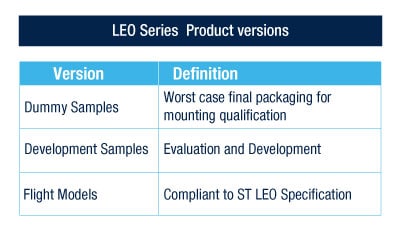New space constellation mission profile
Made possible by the lower cost of launches, the Space industry now sees a rush to deploy satellite constellations. These small, lightweight devices (up to a few hundred kilos) operate typically in Low Earth Orbit (LEO) at altitudes from 400 to 2000 kilometers.
In a constellation configuration, anywhere from tens to thousands of satellites are launched with less demanding mission profiles than traditional Geostationary Earth Orbit (GEO) satellites. They focus on various objectives including internet access, in-flight internet services and Earth observation missions.
Trade-off focused on answering LEO and MEO constellations
Taking full advantage of our 40-year Space heritage and automotive AEC-Q100 qualified production lines, ST's LEO series of rad-hard products in plastic packages offers a unique combination of cost-effectiveness, radiation hardness, quality assurance, and delivered quantities. Specifically tailored to the needs of constellations, our LEO series benefits from dedicated processes for qualification, manufacturing, screening, quality assurance and logistics.
The resulting manufacturing LEO flow is largely based on AEC-Q100 / AEC-Q101 specifications but also includes specific design and manufacturing variations for space applications. In addition to resultant effects tests for Total Ionization Dose (TID), Total Non-Ionization Dose (TNID) and Single-Event Effect (SEE), ST's LEO space components benefit from a Certificate of Conformance, aimed at approving flight-ready components, without any additional cost, lead time or risk for aerospace manufacturers and service providers.


